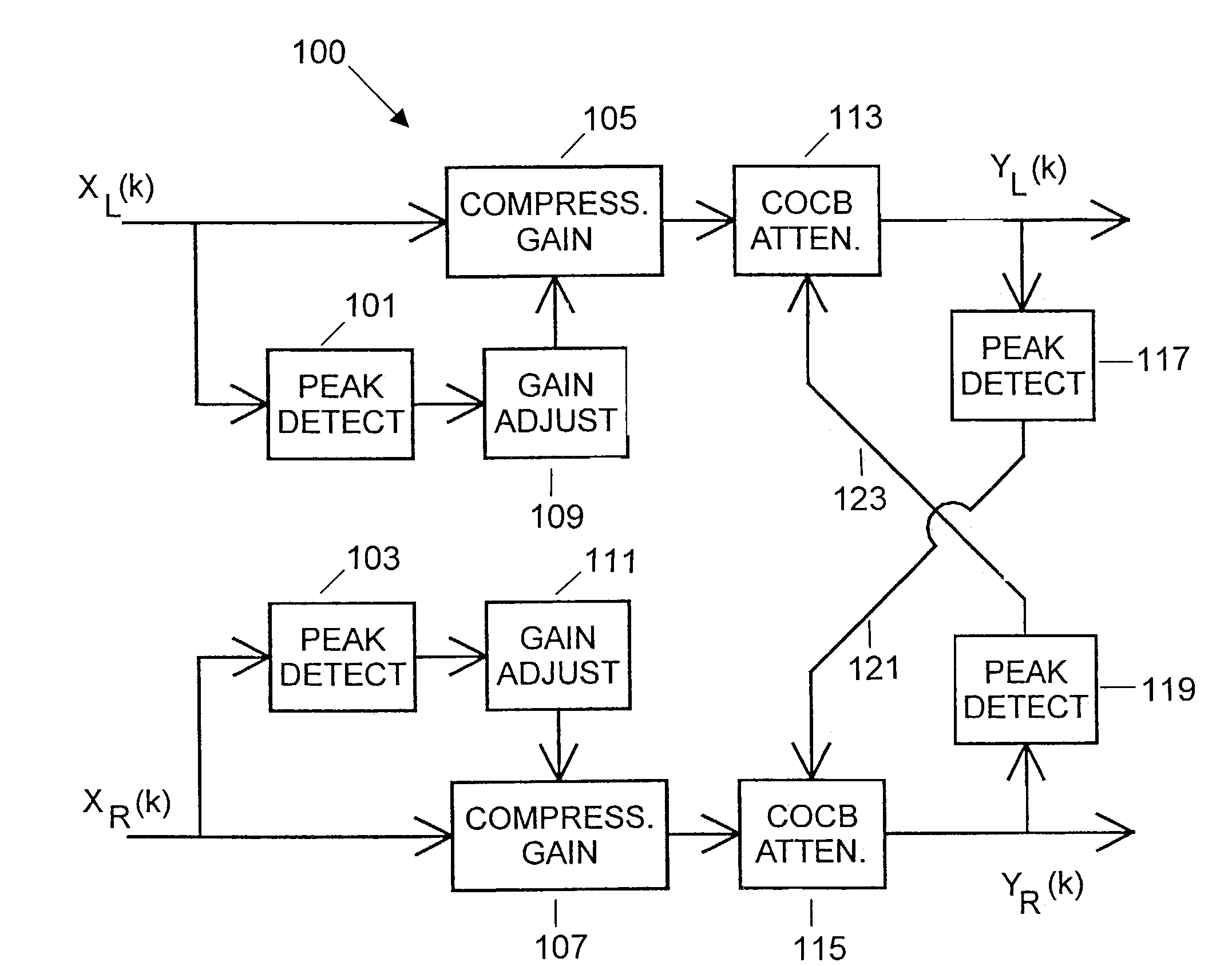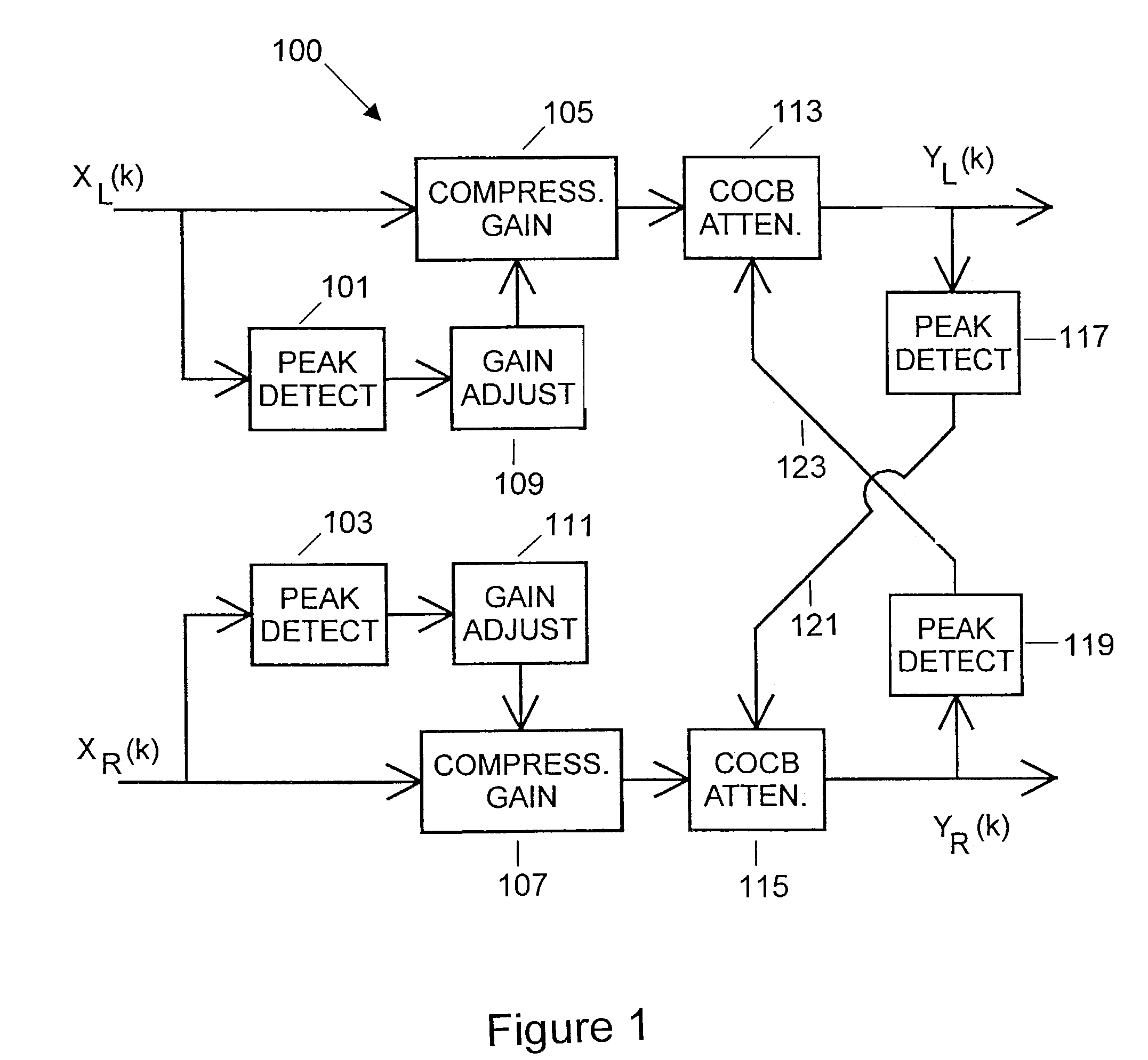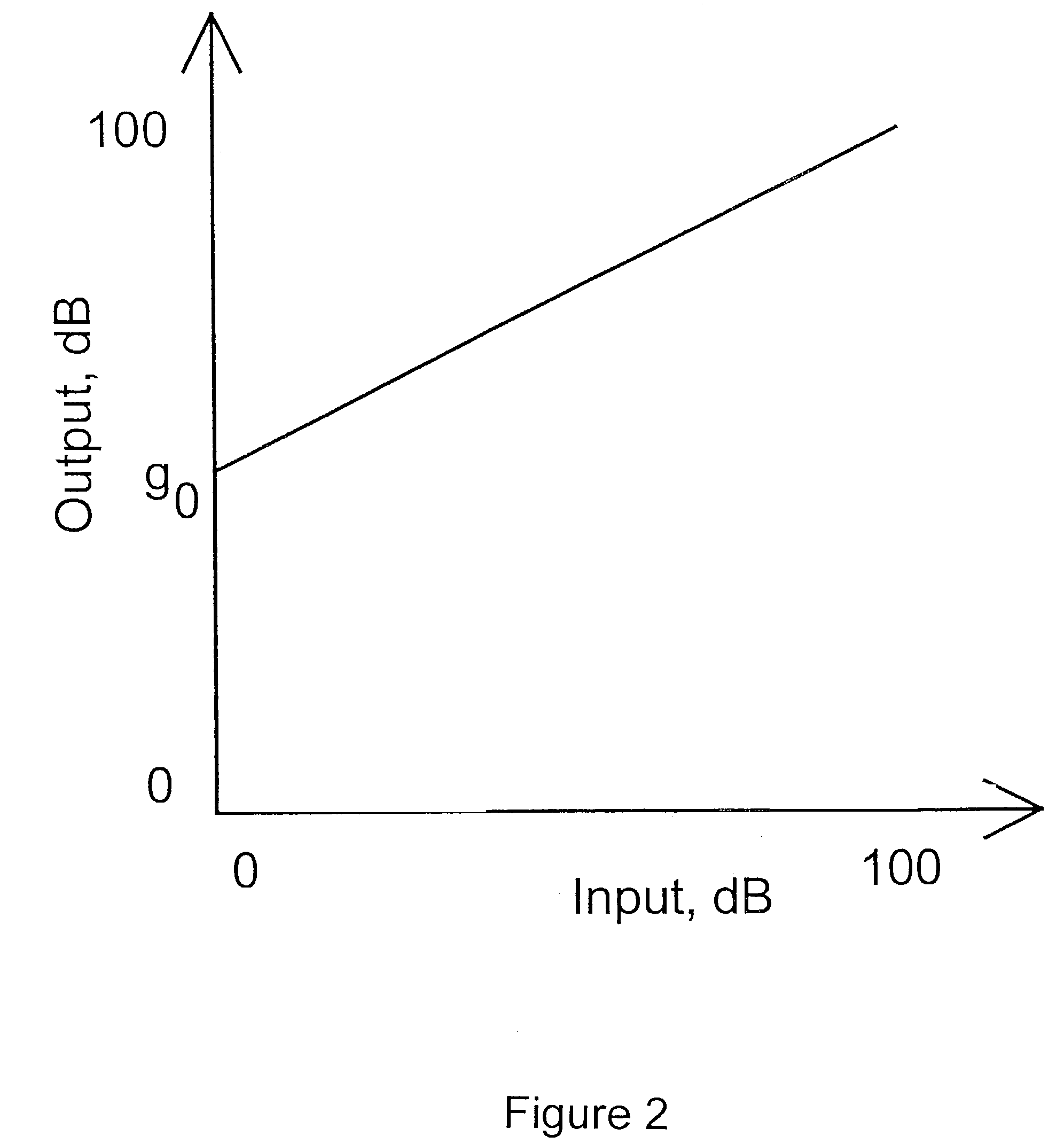Binaural compression system
a compression system and binaural technology, applied in the direction of volume compression/expansion having semiconductor devices, transducer details, electrical transducers, etc., can solve the problems of many hearing-impaired individuals with loss of dynamic range of sounds, inability to hear soft sounds with the same sensitivity as non-hearing impaired people, and many hearing-impaired individuals with loss of both ears
- Summary
- Abstract
- Description
- Claims
- Application Information
AI Technical Summary
Benefits of technology
Problems solved by technology
Method used
Image
Examples
Embodiment Construction
[0030]FIG. 1 is a simplified block diagram of an acoustic signal processing model (i.e., a binaural cochlear model) illustrating a dual-channel signal processing system according to a preferred embodiment of the present invention, used herein for exemplary purposes only. In the preferred embodiment, the dual-channel signal processing system includes a feed-forward binaural cochlear compressor 100 and can be used in a digital hearing aid system (not shown). It is understood that the signal processing system of the present invention can also be used in other applications, such as audio systems, audio broadcasting, telephony, and the like. It should also be understood that the digital hearing aid system can include an in-the-canal, in-the-ear, behind-the-ear, or otherwise mounted hearing aid. It should also be understood that depending upon the techniques employed within a signal processing system of a hearing aid, the hearing aid can represent either a prior art hearing aid or a heari...
PUM
 Login to View More
Login to View More Abstract
Description
Claims
Application Information
 Login to View More
Login to View More - R&D
- Intellectual Property
- Life Sciences
- Materials
- Tech Scout
- Unparalleled Data Quality
- Higher Quality Content
- 60% Fewer Hallucinations
Browse by: Latest US Patents, China's latest patents, Technical Efficacy Thesaurus, Application Domain, Technology Topic, Popular Technical Reports.
© 2025 PatSnap. All rights reserved.Legal|Privacy policy|Modern Slavery Act Transparency Statement|Sitemap|About US| Contact US: help@patsnap.com



